Sept. 28 show
Interurbans: Their rise and fall across Indiana
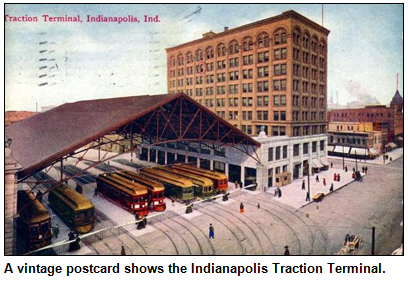 With the fate of Amtrak service in Indiana making recent headlines, and mass transit always a hot topic, consider this:
With the fate of Amtrak service in Indiana making recent headlines, and mass transit always a hot topic, consider this:
Interurbans were intercity electric railways popular 100 years ago - and, believe it or not, the Hoosier state had one of the most extensive systems in the entire country.
The first interurban line in Indiana opened in 1898, from Anderson to Alexandria. The first interurban to Indy opened on New Year's Day in 1900 and brought passengers from Franklin and Greenwood to the Hoosier capital.
Interurban lines connected small towns with most of Indiana's big cities and the cities with each other. Lines radiated from Indianapolis to Fort Wayne, Louisville, Lafayette, Peru, Terre Haute and Richmond (and six other routes). These interurbans then connected with others, reaching Chicago, Toledo, Columbus, and even farther. A separate hub centered on Evansville.
 The bygone Traction Terminal in downtown Indianapolis - which opened in 1904 - was easily the nation's largest interurban station. A nine-story building with a train shed, the Traction Terminal was demolished in 1972.
The bygone Traction Terminal in downtown Indianapolis - which opened in 1904 - was easily the nation's largest interurban station. A nine-story building with a train shed, the Traction Terminal was demolished in 1972.
Today, the only remaining passenger interurban in the state - and one of the few left in the country - is the popular South Shore line that links South Bend with Chicago. The final interurban departed from Indianapolis in September 1941, bound for Seymour.
What happened to the electric railways beloved by earlier generations of Hoosiers? Why was Indiana in the national forefront with them? And why did interurbans vanish from the Indiana landscape?
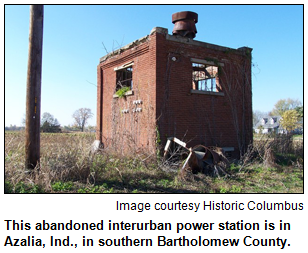 To explore the rise and fall of the interurban system, Nelson will be joined in studio by two experts:
To explore the rise and fall of the interurban system, Nelson will be joined in studio by two experts:
- Nathan Bilger, the planning director for the town of Whiteland in Johnson County. Nathan grew up in Columbia City, lives in Greenfield, and has extensively researched interurban and railroad lines throughout Indiana. Here is the website about Indiana railroading that Nathan maintains.
- And Craig Berndt of Fort Wayne, the author of The Toledo and Chicago Railway Company (2007), a book about one of the interurban lines that served travelers in northeastern Indiana, including residents of towns in his home turf of DeKalb County.
According to Electric Railroads of Indiana (Hoosier Heritage Press, 1980) by Jerry Marlette, a total of 111 different interurban companies operated more than 3,000 cars in the Hoosier state during the interurban era.  Only Ohio had more miles of interurban lines than Indiana's 2,100 miles under wire.
Only Ohio had more miles of interurban lines than Indiana's 2,100 miles under wire.
Vestiges of the interurbans do still remain. In southern Marion County, the contemporary names of some streets - Stop 11 Road, for example - date to their heritage as stops on an interurban line.
When our guests Nathan and Craig join Nelson, they will explore everything from the reliability of the interurban lines to various wrecks, including an accident that involved some of the cars on the final Indy-to-Seymour segment.
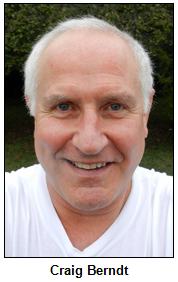 Fun fact: Although the interurban system was designed to shuttle passengers between (not within) towns, travelers in Indy during the early 1900s rode the interurban to Broad Ripple and Irvington. That's because they were distinctively separate villages then, not having been annexed yet into the Hoosier capital.
Fun fact: Although the interurban system was designed to shuttle passengers between (not within) towns, travelers in Indy during the early 1900s rode the interurban to Broad Ripple and Irvington. That's because they were distinctively separate villages then, not having been annexed yet into the Hoosier capital.
Of Indiana's 92 counties, 68 were served by at least one interurban line. In addition to the massive Traction Terminal in downtown Indy, Muncie was known for its impressive interurban station.
Interurbans competed for passengers with steam railroads whose terminals included the majestic Union Station in Indy. Running much more frequently during the day than passenger trains, the electric interurbans were tethered to power lines running above their tracks. According to several sources, few systems of transportation ever developed as quickly as the electric interurbans, and probably none disappeared as quickly.
Could the interurban system be successfully revived? Nelson plans to pose that question to Nathan and Craig.
Roadtrip: Feast of the Hunters' Moon, Oct. 5-6
Guest Roadtripper and photo historian Joan Hostetler of Heritage Photo & Research Services suggests we take a Roadtrip to the West Lafayette area for the annual Feast of the Hunters' Moon celebration coming up on Oct. 5-6.
The festival is a re-creation of the annual fall gathering of the French and Native Americans that took place at Fort Ouiatenon, a fur-trading outpost, in the mid-1700s. It is held annually in early autumn on the banks of the Wabash River, four miles southwest of West Lafayette, Ind.
Joan tells us that Historic Fort Ouiatenon Park is a primitive country setting on South River Road, and the grounds stretch across more than 30 acres along the banks of the Wabash River.
Thousands of participants re-enact this event, creating a feast for your senses: Smell the wood smoke, hear the report of the rifles, savor authentic food and more.
History Mystery
Amid much fanfare, the Traction Terminal opened in 1904 at a high-visibility site in downtown Indianapolis. It was by far the nation's largest interurban station. The nine-story building and train shed remained at the site for nearly 70 years.
Designed by the D.H. Burnham & Company architectural firm, the Traction Terminal was a downtown landmark for generations of Hoosiers as the hub of the state's electric rail system.
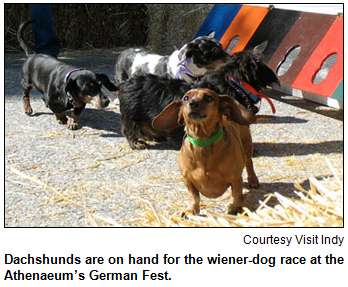 But little attention was paid to its demolition in 1972, decades after the last interurban had departed from the Hoosier capital.
But little attention was paid to its demolition in 1972, decades after the last interurban had departed from the Hoosier capital.
Question: Name the high-visibility site - the downtown Indy street corner - of the bygone Traction Terminal.
The call-in number is (317) 788-3314. Please do not call into the show until you hear Nelson pose the question on the air, and please do not try to win the prize if you have won any other prize on WICR during the last two months.
The prize is two tickets to the 5th Original and Fabulous GermanFest on Oct. 12, 4 tickets to GlowGolf, a miniature golf course across from the food court at Circle Centre mall in downtown Indianapolis, courtesy of Visit Indy and GlowGolf, and admission for four to the Indiana Experience at the Indiana History Center, courtesy of the Indiana Historical Society.
Your Hoosier History Live! team,
Nelson Price, host and creative director
Molly Head, producer, (317) 927-9101
Richard Sullivan, webmaster and tech director
Pam Fraizer, graphic designer
Garry Chilluffo, creative consultant
Michele Goodrich, Jed Duvall, grant consultants
Joan Hostetler, photo historian
Dana Waddell, volunteer-at-large
www.hoosierhistorylive.org
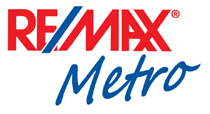






Please tell our sponsors that you appreciate their support: Broad Ripple Historic Home Tour | Indiana Historical Society | Lucas Oil | Re/Max Metro | Story Inn | The Fountain Square Theatre Building | The Legend Classic Irvington Cafe

 Acknowledgments to Print Resources, Monomedia, Indiana Humanities, Visit Indy, WICR-FM, Fraizer Designs, Heritage Photo & Research Services, Derrick Lowhorn and many other individuals and organizations. We are an independently produced program and are self-supporting through organizational sponsorships, grants and through individual tax-deductible contributions through Indiana Humanities. We do not receive any government funding. Visit our website to learn how you can support us financially. Also, see our Twitter feed and our Facebook page for regular updates.
Acknowledgments to Print Resources, Monomedia, Indiana Humanities, Visit Indy, WICR-FM, Fraizer Designs, Heritage Photo & Research Services, Derrick Lowhorn and many other individuals and organizations. We are an independently produced program and are self-supporting through organizational sponsorships, grants and through individual tax-deductible contributions through Indiana Humanities. We do not receive any government funding. Visit our website to learn how you can support us financially. Also, see our Twitter feed and our Facebook page for regular updates.
HHL tidbits
Sweet tweets from Allison, and more
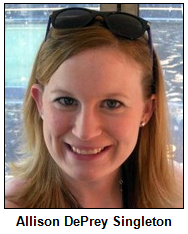 Hoosier History Live wishes to thank Allison DePrey Singleton for being our official Tweeter. Allison told us that we needed to be on Twitter, and producer Molly said, "I can't add one more thing to my list; would you like to do it?"
Hoosier History Live wishes to thank Allison DePrey Singleton for being our official Tweeter. Allison told us that we needed to be on Twitter, and producer Molly said, "I can't add one more thing to my list; would you like to do it?"
Spreading the duties out is a beautiful thing.
Oh, and Allison also can teach you how to trace your ancestry.

As you may know, we enjoy taking our show guests out to lunch on Saturdays after the show if schedules allow. Many of our guests have traveled quite a distance! We have a new sponsorship arrangement with Fountain Square Theatre Building that makes dining at one of its restaurants possible. And it's just a straight shot up Shelby Street from the UIndy campus! Our guests also get to see a bit of the evolving Fountain Square area.

We'd also like to thank some of our 2013 contributors, Julie Slaymaker and Jane "Janie" Hodge of Indianapolis and Ann Allen of Akron, Ind. You can help to defray the costs of maintaining our website, our email marketing software, our editing costs, etc. by simply clicking on the yellow "Donate" button on our website. If you would like your contribution to be tax-deductible, visit the "Support us" page on our website. Your support helps us to remain and the air, on the Web and in your inbox.

The Irvington Library Listening Group continues to meet on a regular basis from noon to 1 p.m. on Saturdays to listen to and discuss the live show. If you think you would enjoy listening with fellow history lovers, just stop by the library at 5626 E. Washington St. in Indianapolis and ask for the listening group.
By the way, it's easy to form your own listening group; all you need is a relatively quiet room with comfortable chairs and either a radio or an online listening device to pick up the show from the live Web stream on Saturdays. We do have listeners all over the world!
If you need any advice on how to get started, please contact molly@hoosierhistorylive.org. Or better yet, just go ahead and get started! A weekly listening group is an easy way to get "regulars" into your organization or place of business, and we will promote your group in our enewsletter. Also, this is a great warm and cozy winter activity. Coffee anyone?
Oct. 5 show
Amish in Indiana
Only two states, Ohio and Pennsylvania, have larger Amish populations than Indiana.
The 49,000 Amish residents here live in about 22 distinct communities scattered across the state, from Elkhart and LaGrange counties in northern Indiana to settlements near the towns of Washington in southern Indiana as well as Berne and Geneva in the northeast.
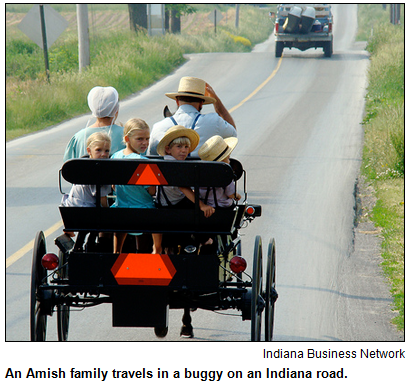 "What is it about the Amish that both enchants and perplexes us? ... Could a horse-and-buggy people be more satisfied than the rest of us, with all our modern conveniences?"
"What is it about the Amish that both enchants and perplexes us? ... Could a horse-and-buggy people be more satisfied than the rest of us, with all our modern conveniences?"
Those questions are posed in a new book whose co-author, Steven Nolt, a history professor at Goshen College, will be Nelson's guest to explore all aspects of the "intensely private and insular" folks, who, as his latest book puts it, are "known for their simple clothing, plain lifestyle and limited technology."
Steve's co-authors of The Amish (Johns Hopkins University Press, 2013) are Donald Kraybill and Karen Johnston-Weiner. In addition, Steve is the author or co-author of several other books about the Amish and has collaborated on multiyear research projects about their religion, history and distinctive culture.
We will explore aspects of the ever-increasing population of Amish (the average family has seven children), ranging from their values and schools to their shift from an almost exclusive focus on farming to jobs in factories and businesses such as the RV industry in the Elkhart area - even though the Amish do not own or drive motor vehicles.
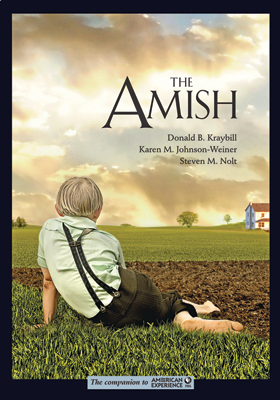 According to The Amish, about two-thirds now support themselves in Amish-owned small businesses or by working in non-Amish factories and shops.
According to The Amish, about two-thirds now support themselves in Amish-owned small businesses or by working in non-Amish factories and shops.
Steve also will address misconceptions about the Amish, who recently have become, as his book puts it, "popular culture icons of tourism and reality TV shows, even as they have deftly learned to flourish in a digital world."
He points out that the Amish are not homogeneous. Some communities in Indiana include families who send their children to public schools until the eighth grade; children in other communities almost exclusively attend private schools. (In Adams County, our host Nelson recently was part of a group that visited a one-room Amish schoolhouse attended by students ranging from 6 to 15 years old, all instructed by a single, bearded teacher.)
Founded more than 300 years ago in Europe, the Amish Church faced persecution. The first Amish settled in Pennsylvania during the 1730s. According to The Amish, many families headed west - including to Ohio and Indiana - during the 1800s because of rising land prices in the eastern United States.
In northern Indiana, the towns of Nappanee and Shipshewana - both with Amish communities that date to the 19th century - have been popular in recent decades for tourists and shoppers intrigued by products such as quilts and baked goods.
The Amish typically refer to outsiders as, simply, "the English."
- Learn more: Watch the PBS documentary The Amish.
© 2013 Hoosier History Live! All rights reserved.